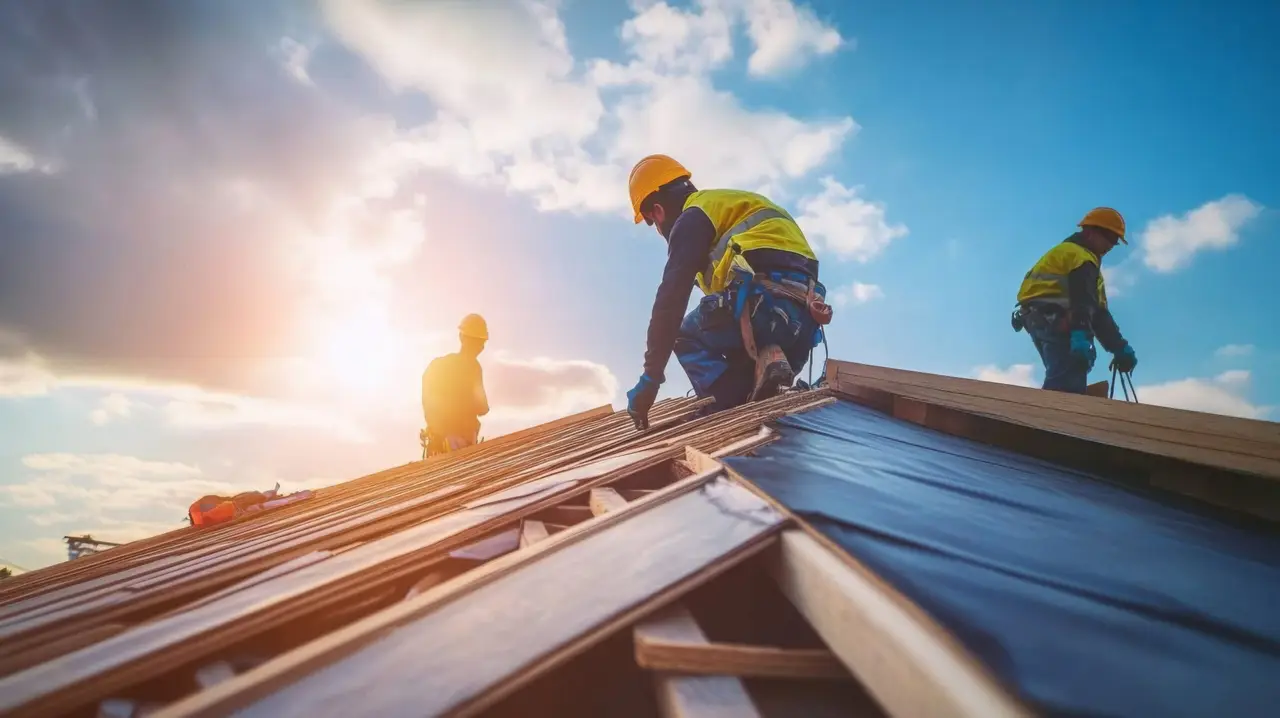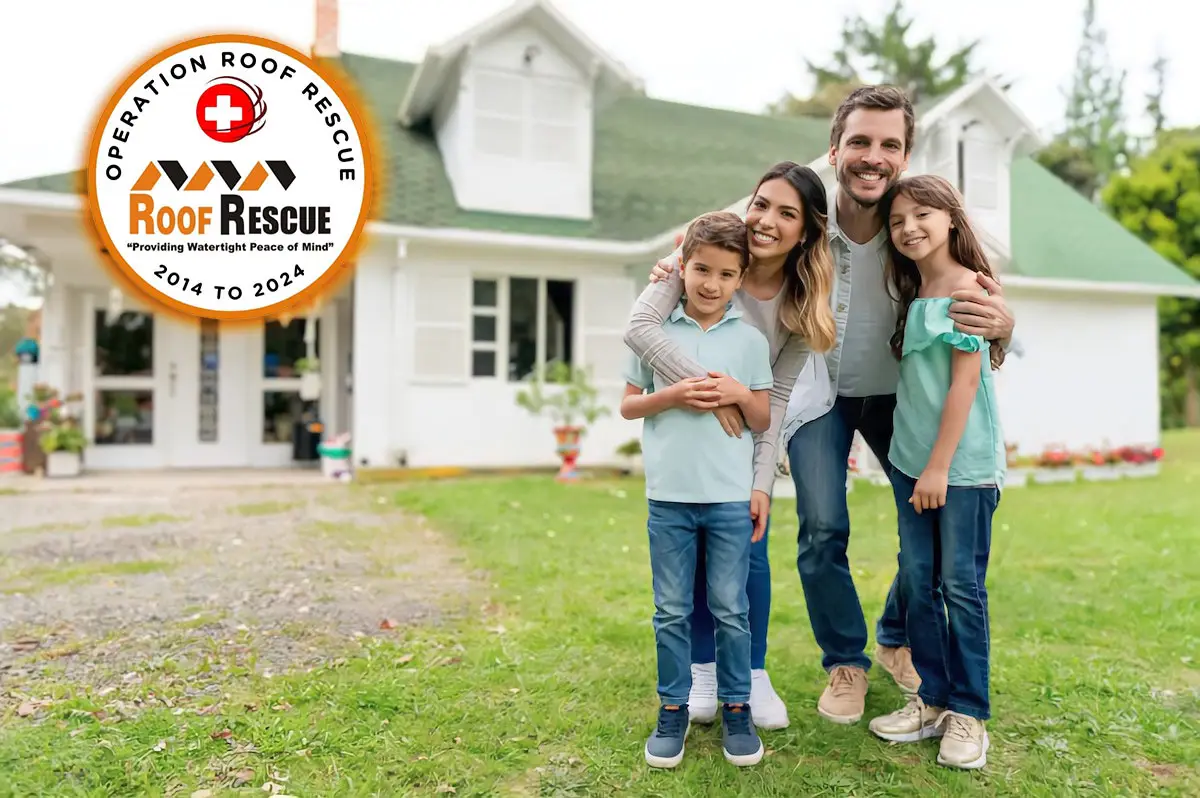Leaks, shingle damage, and ventilation issues that are repaired promptly ensure that your home is weatherproof and cozy for many years to come. The roof protects your house, investments, and family from various outdoor elements and potential damage. The best way to take good care of it is to know how to identify common roof problems. This way, you’ll know exactly when to call for repairs to keep your home safe.
As roofing experts, Roof Rescue can provide a helpful guide to quickly learn everything you need to know about damage and when to get repairs.
Roof Leaks and Water Damage
A leaking roof is the number one problem to watch out for. Your roof is designed as a waterproof surface. Rain and snow melt are directed down the roof slope into the gutters and then directly safely away from the house through each downspout. Any flaw in your roof, however, can allow water to leak in and cause water damage.
Leaks are most often caused by damaged shingles (wind or impact damage), cracked and loose flashing, or clogged gutters. Signs of water damage from a leaky roof appear inside your home as water stains, a musty mold smell (mold growth), and peeling paint. It is vital to address roof leaks immediately to prevent extensive water damage and for the sake of your insurance claim. Prompt repair is essential to address these issues effectively.
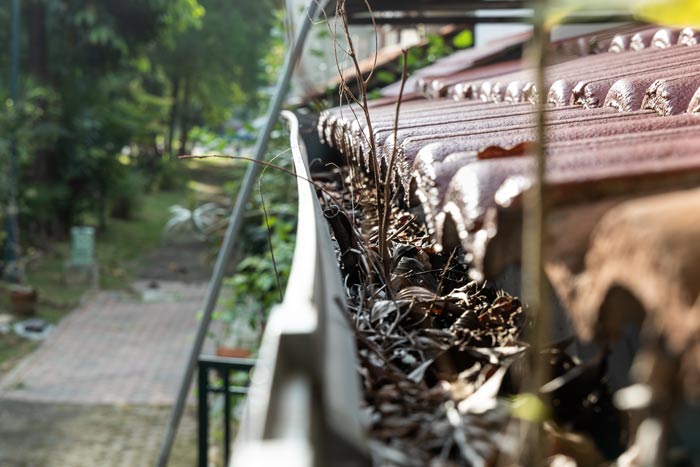
Signs of a Leaky Roof
Know the signs of a roof leak and act immediately when you notice them. Roof leaks show signs that water is coming from above, so there tends to be more issues with your ceiling and water dripping down walls and beams. These indicators include:
- Water stains or pockets on the ceiling
- Water in the light fixtures
- Dripping water stains on the walls
- Musty odors from mold growth
- Peeling paint or wallpaper from hidden moisture
- Visible water spots during rain or snow melt
Preventing Leaks
The best way to prevent leaks is with regular inspections, especially after a bad storm where shingles may have been damaged. Proper flashing installation is also essential, and your roofers will let you know if your flashing is loose. Maintaining the flashing at the roof edge, along with joints, seams, and valleys, is crucial to protect your home from water damage.
Keep your gutters and downspouts clean, as well, to prevent backflow of water onto the walls of your house.
Shingle Issues
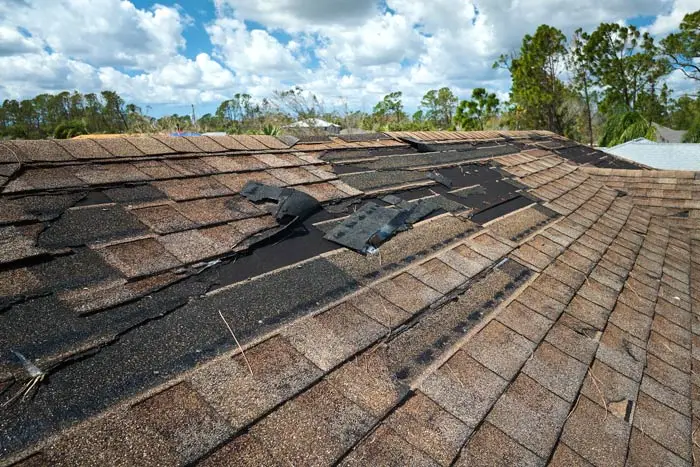
Shingles form a type of weatherproof armor to protect your house, and each shingle is important. Poor installation can lead to issues such as mold, short life expectancy, material shrinkage, voiding warranties, and future repair costs. In storms with high-speed wind or falling tree branches, shingles can be cracked, curled, or blown away. This leaves gaps in your home’s layered roof surface, which can cause both leaks and insulation issues. If you notice visible shingle damage or suspect shingle damage after a storm, it is very important to have your shingles fixed promptly.
Signs of Damaged Shingles
There are several types of shingle damage, most of which occur during intense storms.
- Cracked, buckled, or curling shingles
- Missing or displaced shingles
- Granule loss
Cracked, buckled, or curling shingles are visibly damaged but still present on the roof. Missing or displaced shingles have been blown out of place by high-speed winds. Both types require individual shingle replacement to make your roof whole again.
Granule loss is when the tiny UV-resistant grains fall off of your shingles, leaving them smooth and “bald”. This actually indicates that your roof is reaching it’s lifespan and you should start planning for your roof replacement in the near future.
Dealing with Shingle Damage
There are two ways to handle shingle damage. Most often, individual damaged or missing shingles can be replaced. If an area is badly damaged, perhaps from a falling tree branch, the entire section of your roof can be rebuilt.
However, if your roof is 20+ years old with falling granules or the damage to your roof is extensive, a roof replacement is likely the best long-term solution.
Ventilation and Insulation Problems
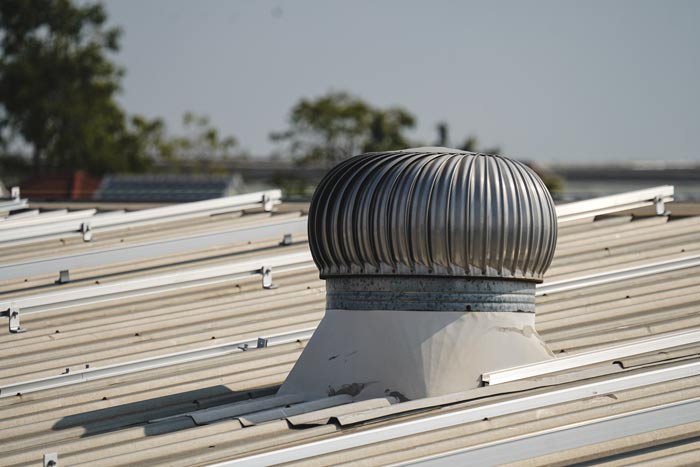
Proper ventilation and insulation in the space below your roof (usually your attic) is essential foran even-temperature comfort inside your home. Improper attic ventilation can lead to excess heat buildup, damage to shingles and sheathing, and potential for moisture accumulation. It is most important in the winter, when warm air below your roof helps to melt snow and prevent ice dams. Poor ventilation can also result in high internal temperatures, shingle deterioration, structural damage, high energy costs, and mold growth. Sufficient attic insulation ensures that your roof does not freeze, protecting it from snow buildup and ice damage.
However, not every home has a properly insulated or ventilated roof and you may notice ice dams or snow-related moisture damage each year.
Signs of Improper Attic Ventilation and Insulation Issues
There are several signs that your roof needs ventilation and insulation improvements. These include:
- Ice dams forming during winter
- Moisture buildup or condensation in the attic
- Stuffy attic conditions
- Excessive energy bills due to poor insulation
Improving Ventilation and Insulation
The first step to improve your roof’s airflow situation is to upgrade the insulation. Add roll-out insulation instead of blow-in and fully cover the roof and attic areas. You can also install one of several potential attic ventilation systems, depending on what works best for the climate and your roof design.
Other Common Roof Problems
While leaks, shingle damage, and ventilation issues are the most common problems, there are others that every homeowner should be able to recognize, when they see it. Roofing materials such as shingles, flashing, and synthetic rubber membranes need regular maintenance to prevent issues like shrinkage, cracking, and damage.
Flashing Damage
- Flashing is the metal fittings around chimneys and vents on your roof. If the flashing is loose or cracked, leaks occur.
Structural Damage
- Watch for signs of a “drooping roof” or other indications of structural damage.
Algae and Moss
- In some climates, green micro-plants like algae and moss want to grow on your roof. These can weaken your shingles, so have these growths removed.
Aging and Deterioration
- Most roofs only last 20-30 years, and age faster without proper care. Plan ahead to replace your roof before it’s expiration date to ensure your home always enjoys full protection and energy-efficiency. Even a top quality, perfectly installed roof wears over time and becomes damaged due to climate conditions and temperature fluctuations.
Importance of Regular Roof Inspections
The key to keeping your roof and home safe is regular roof inspections. While there are a few roof problems you can spot easily, the best protection is an expert inspection by a professional roofing company at least once a year.
In regions that experience severe storms, an inspection after each maelstrom is also a wise decision to catch damaged shingles or cracked flashing as early as possible. Hiring a roofing contractor can provide immediate assistance for issues like buckling shingles and hail damage inspections.
Consider adding an annual or bi-annual professional inspection to your calendar. The best times of year are spring and fall, just before the heat of summer and the snows of winter so your roof is in top condition when you need it weatherproof, well-insulated protection the most.
Protect Your Roof with Roof Repair
Taking good care of your roof is an important part of enjoying your home. The skilled team of Roof Rescue can help you identify roof problems early and conduct swift, efficient repairs so that your home is always at its most secure against the seasonal weather.
Schedule your next roof inspection and maintenance visit soon. Contact us online or call for roof services in Idaho, Wyoming, or Utah.
Mark Franklin, owner of Roof Rescue in Idaho Falls, Idaho, has been a trusted name in roofing since 2014. Serving Idaho, Montana, Wyoming, and Utah, Roof Rescue specializes in commercial and residential roof replacement and installation. Recognized for community initiatives like the “Operation Roof Rescue” program, which provides free roofs to local heroes, Mark combines professionalism with a passion for giving back. With 16 years of industry experience, an A+ Better Business Bureau rating, and glowing customer reviews, Mark’s leadership embodies quality and community-focused service.

